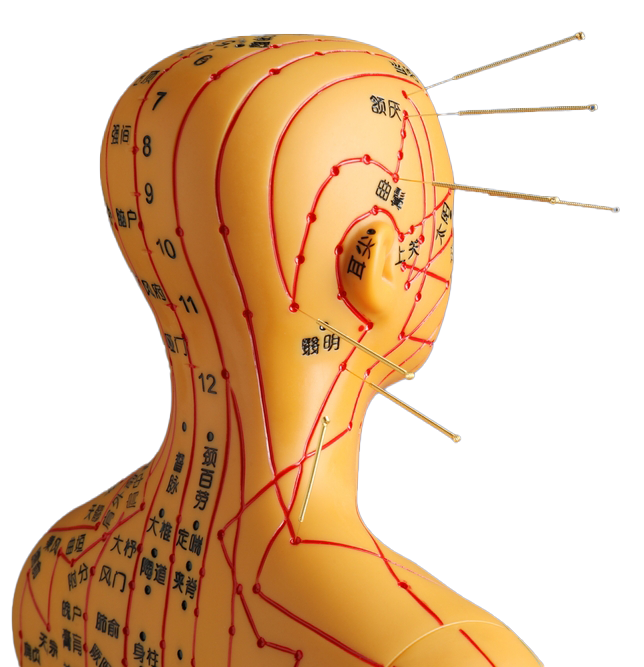- Facet joint Radiofrequency Thermocoagulation (RFT) Treatment
- Radiofrequency Thermocoagulation Dorsal root ganglion (DRG) radiofrequency thermocoagulation (RFT)
- Discitis Procedure
- Sacroiliac Joint Radiofrequency Treatment (Simplicity)
- In-Disc Ozone Therapy
- Nucleoplasty
- Transforaminal Injection (Pinpoint)
- Facet joint block
- Epidural Injection
The role of different specialities (physiotherapist, orthopaedist, psychologist, neurosurgeon)
- Home
- Multidisciplinary Approach
- The role of different specialities (physiotherapist, orthopaedist, psychologist, neurosurgeon)
Contents
Toggle- Creating an individualised treatment plan
- The role of different specialities (physiotherapist, orthopaedist, psychologist, neurosurgeon)
- Pain treatment during pregnancy
- Treatment of chronic pain in the elderly
- Pain management in children
- Stress management
- Healthy eating
- Ergonomic living arrangements
- Exercise and mobility
- Facet joint Radiofrequency Thermocoagulation (RFT) Treatment
- Radiofrequency Thermocoagulation Dorsal root ganglion (DRG) radiofrequency thermocoagulation (RFT)
- Discitis Procedure
- Sacroiliac Joint Radiofrequency Treatment (Simplicity)
- In-Disc Ozone Therapy
- Nucleoplasty
- Transforaminal Injection (Pinpoint)
- Facet joint block
- Epidural Injection
- Cancer pain
- Permanent Epidural / Spinal Port Application
- Vascular Port (Permanent Vascular Access)
- Trigeminal Nerve RFT
- Blockade of Ganglion Stellatum
- Lumbar Sympathetic Ablation
- Facet joint Radiofrequency Thermocoagulation (RFT) Treatment
- Radiofrequency Thermocoagulation Dorsal root ganglion (DRG) radiofrequency thermocoagulation (RFT)
- Hernia Burning (IDET)
- Discitis Procedure
- Sacroiliac Joint Radiofrequency Treatment (Simplicity)
- Permanent Epidural / Spinal Port - Pump System
- In-Disc Ozone Therapy
- Nucleoplasty
- Peripheral Nerve Block
- Transforaminal Injection (Pinpoint)
- Facet joint block
- Epidural Injection
- Intra-articular Fluid Treatment
- Dorsal root ganglion (DRG) radiofrequency thermocoagulation (RFT)
- Spinal cord stimulation (pain pacemaker)
- Ergonomic living arrangements
- Spinal cord stimulation (pain pacemaker)
- Nucleoplasty
- Radiofrequency ablation
- Herbal solutions
- Dry needle treatment
- Anti-ageing treatments
- Ozone therapy
- Cupping therapy - Cupping
- Mesotherapy
- Prolotherapy
- Acupuncture
- Stem Cell Therapy
- Nerve blockages
- Corticosteroid injections
- Massage and relaxation techniques
- Manual therapy
- Electrotherapy
- Neuropathic pain medications
- Anti-inflammatory drugs
- Muscle relaxants
- Painkillers (paracetamol, ibuprofen, etc.)
Multidisciplinary approach for painis an approach where multiple specialities come together to form a joint treatment plan to effectively manage a patient's pain. Such an approach addresses the biological, psychological and social aspects of pain and each specialist contributes according to the needs of the patient. This approach is particularly effective in the treatment of chronic pain and aims to improve the patient's quality of life.
The roles of different specialities in multidisciplinary pain management are described in detail below:
1. Benefits of Multidisciplinary Approach
- Holistic Treatment: Pain is not only a physical problem; it also has psychological and social dimensions. Multidisciplinary approach addresses these different aspects.
- Patient Specific Planning: Each individual has a different pain source, tolerance and living conditions. A personalised treatment plan is created.
- Effective Co-operation: The specialists assess the patient's condition together and offer a more comprehensive treatment.
- Non-Drug Solutions: A combination of physical, psychological and rehabilitative methods is used to reduce dependence on medication.
2. Roles of Different Specialities
2.1 Physiotherapist
Role: Provides treatments that support the musculoskeletal system by addressing the physical causes of pain.
Duties:
- Exercise Programmes: Creates individualised exercise plans to reduce pain and increase mobility (e.g. core stabilisation exercises for back pain).
- Manual Therapy: Uses muscle relaxation, joint mobilisation and manipulation techniques.
- Physical Therapy Applications: It relieves pain with methods such as TENS (Transcutaneous Electrical Nerve Stimulation), ultrasound, hot-cold applications.
- Posture and Posture Training: Provides training to prevent pain caused by poor posture.
- Rehabilitation: It works to restore loss of function after surgery or due to chronic pain.
Example Situations:
- Herniated disc, osteoarthritis, fibromyalgia, neck and back pain.
2.2 Orthopaedist
Role: Manages the diagnosis and treatment process in musculoskeletal diseases and injuries.
Duties:
- Diagnosis and Treatment: Diagnose traumatic injuries, fractures, dislocations and degenerative diseases.
- Medication Therapy: Relieve pain with painkillers, anti-inflammatory drugs or corticosteroid injections.
- Surgical Interventions: Prosthetic operations (e.g. knee or hip replacement), nerve decompression or arthroscopy.
- Physical Therapy Planning: Collaborates with physiotherapy in the recovery process after surgery.
Example Situations:
- Osteoarthritis, rotator cuff tears, knee or shoulder pain, spinal deformities.
2.3 Psychologist
Role: Improves pain perception by managing the psychological effects of pain and conditions such as stress, depression or anxiety.
Duties:
- Cognitive Behavioural Therapy (CBT): It reduces the perception of pain by changing the patient's thinking and reactions to pain.
- Mindfulness and Relaxation Techniques: Reduces muscle tension caused by stress and relieves pain.
- Support Groups: Encourages individuals with chronic pain to receive social support.
- Techniques for Coping with Pain: Provides the patient with skills to cope with pain.
Example Situations:
- Chronic pain, fibromyalgia, migraine, cancer pain, psychogenic pain.
2.4 Neurosurgeon
Role: It is a speciality that evaluates the pain caused by the nervous system (e.g. nerve compression, disc herniation) and performs surgical intervention if necessary.
Duties:
- Diagnosis and Imaging: Diagnoses diseases of the spine and nervous system with imaging methods such as MR, CT.
- Surgical Interventions:
- Microdiscectomy: It is a surgical procedure for lumbar or cervical hernia.
- Spinal Fusion: It is the method used for fixation of the spine.
- Nerve Decompression: Surgery is performed to relieve nerve compression.
- Invasive Pain Management:
- Spinal cord stimulation.
- Epidural injections.
- Radiofrequency ablation.
Example Situations:
- Lumbar and cervical herniated discs, spinal stenosis, pinched nerves (e.g. sciatica).
2.5 Other Areas of Expertise
Algologist (Pain Specialist)
- Role: Manages chronic and severe pain with medication and interventional methods.
- Treatment Methods:
- Nerve blocks, epidural injections, neurolytic treatments.
Rheumatologist
- Role: Manages pain due to rheumatic diseases.
- Treatment Methods:
- Disease modifying drugs (DMARDs), biological therapies.
Neurologist
- Role: Diagnoses and treats migraine, neuropathic pain and other nervous system-induced pain.
- Treatment Methods:
- Neuropathic pain medications (gabapentin, pregabalin).
3. Collaboration in Multidisciplinary Approach
- Coordination: All specialists communicate regularly and update the treatment plan together.
- Patient Education: Awareness of the patient during the treatment process increases compliance with the treatment.
- Treatment Plan: Physical therapy, psychological support and medical treatment are applied together in line with the recommendations of experts.
4. Situations where multidisciplinary approach is used
- Chronic Pain
- Fibromyalgia, neuropathic pain, cancer pain.
- Musculoskeletal System Pains
- Low back, neck and back pain; osteoarthritis.
- Postoperative Pain
- Pain management after orthopaedic or neurological surgery.
- Psychogenic Pain
- Cases where pain is caused by psychological reasons.
5. Interaction of Patient and Multidisciplinary Approach
- Patient Engagement: Active participation of the patient in the treatment process should be ensured and treatment goals should be determined together with the patient.
- Monitoring and Evaluation: The treatment plan should be reviewed regularly and updated according to patient needs.
Summary
A multidisciplinary approach to pain aims to manage pain in a holistic way, in collaboration with physiotherapists, orthopaedists, psychologists, neurosurgeons and other specialists. This approach addresses both the physical and psychological aspects of pain and ensures that treatment is more effective and lasting. Thanks to the harmonious work of specialists, pain is controlled and the patient's quality of life and independence are improved.
Our treatments
- Home
- Multidisciplinary Approach
- The role of different specialities (physiotherapist, orthopaedist, psychologist, neurosurgeon)



